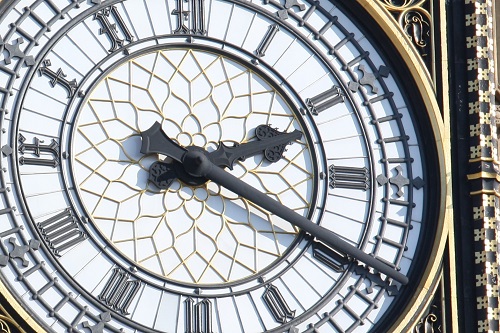 Horse Guards
Horse Guards
Horse Guards is official ceremonial entrance to St James's and Buckingham Palace and headquarters to the Household Cavalry Mounted Regiment who provide troops for The Queen's Life Guard. Cavalery soldier in Mounted Review Order, the State ceremonial uniform.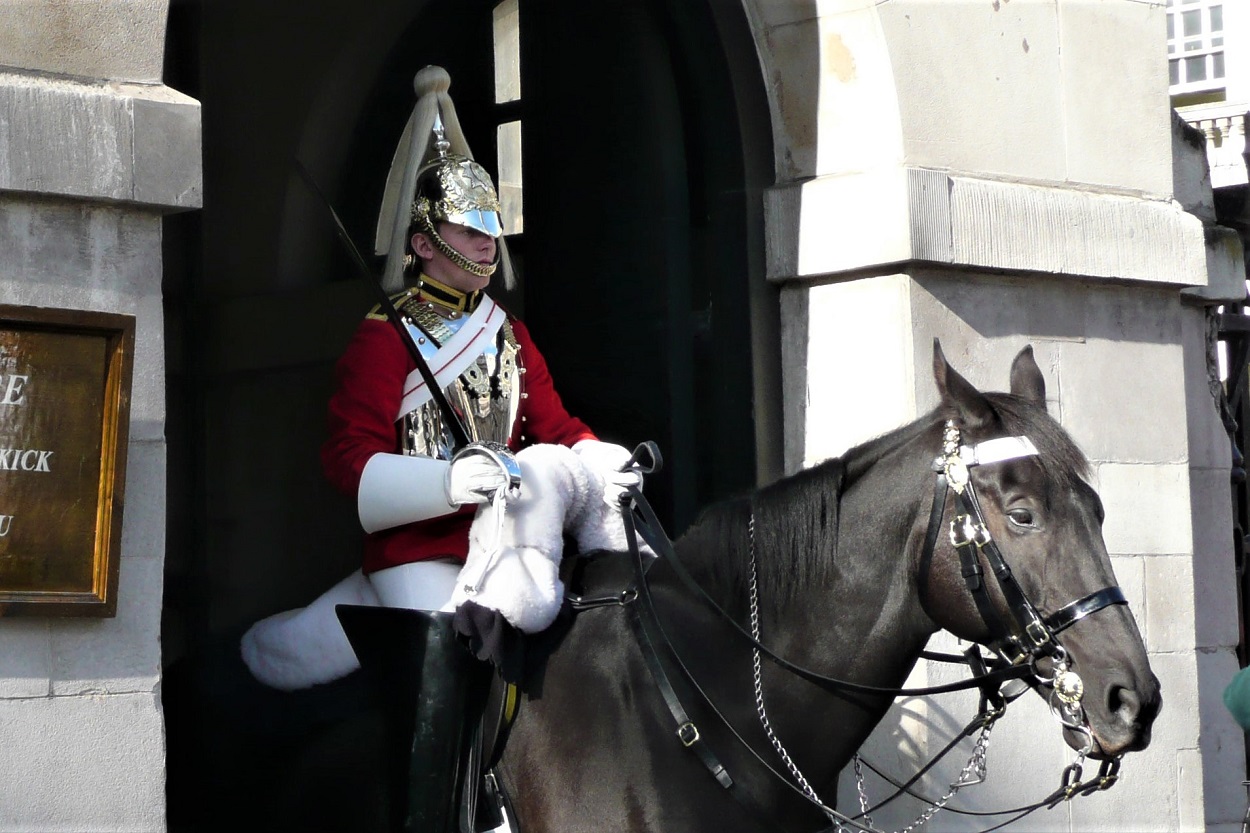
Royal Guard
A royal guard has been kept here since 1660 when the original Guard House of the old Palace of Whitehall was on this site. The Palace of Whitehall, the largest palace in Europe at that time, was destroyed by fire in 1698 and replaced by the present Horse Guards building in 1753.Today, The Queen’s Life Guard comprises of a Squadron of The Life Guards (red tunics and white plumed helmets) and a Squadron of The Blues and Royals (blue tunics and red plumed helmets). Used to provide the Sovereign's Escort on state occasions and for ceremonial duties all the soldiers in the Household Cavalry are highly trained and are required to take an active role in the Army’s military operations.
Horse Guards Parade, originally an entertainment venue created by Henry VIII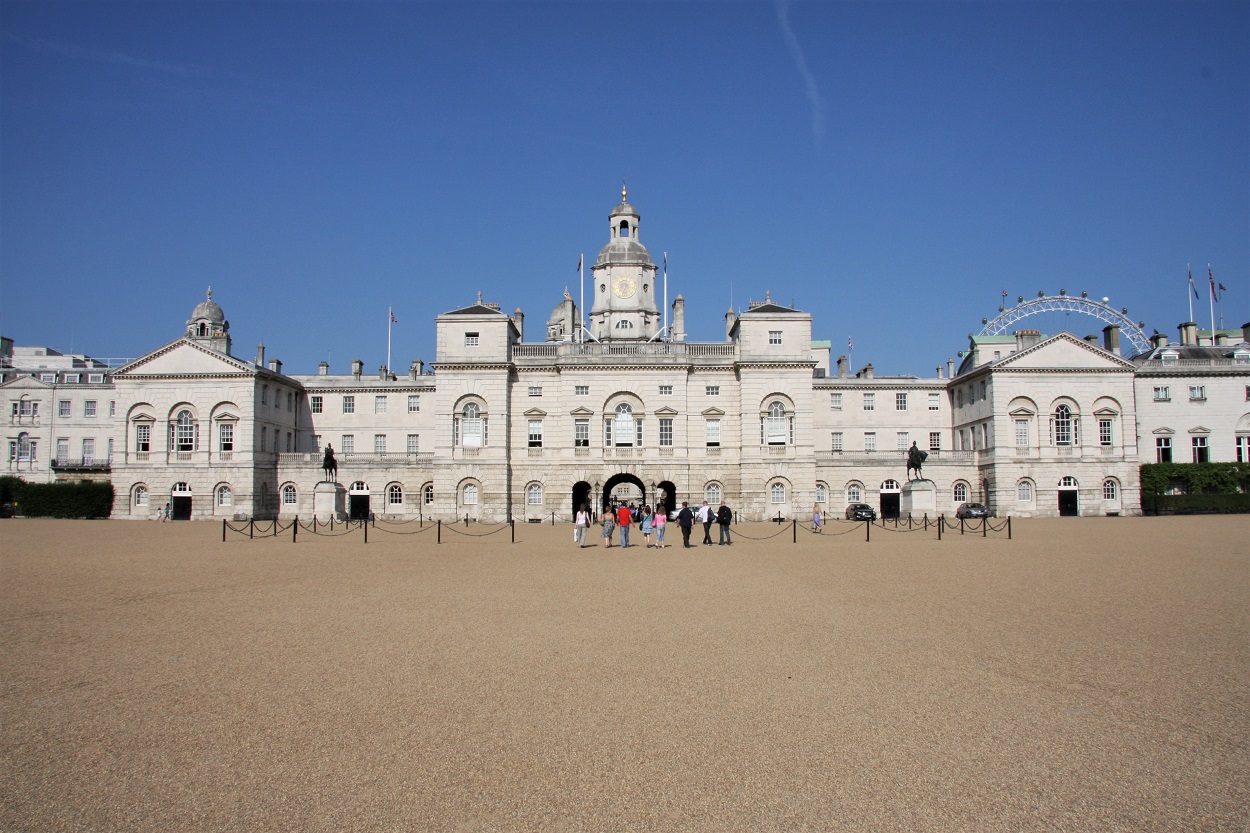
Horse Guards Parade
Behind Horse Guards is Horse Guards Parade. Built by Henry VIII as a jousting courtyard it is now the guards exercise ground and venue for the annual ‘Trooping the Colour’ in June. This marks the Queens’ official birthday and is an important part of Army history and tradition.Tourists can walk through the archway connecting Whitehall to Horse Guards Parade.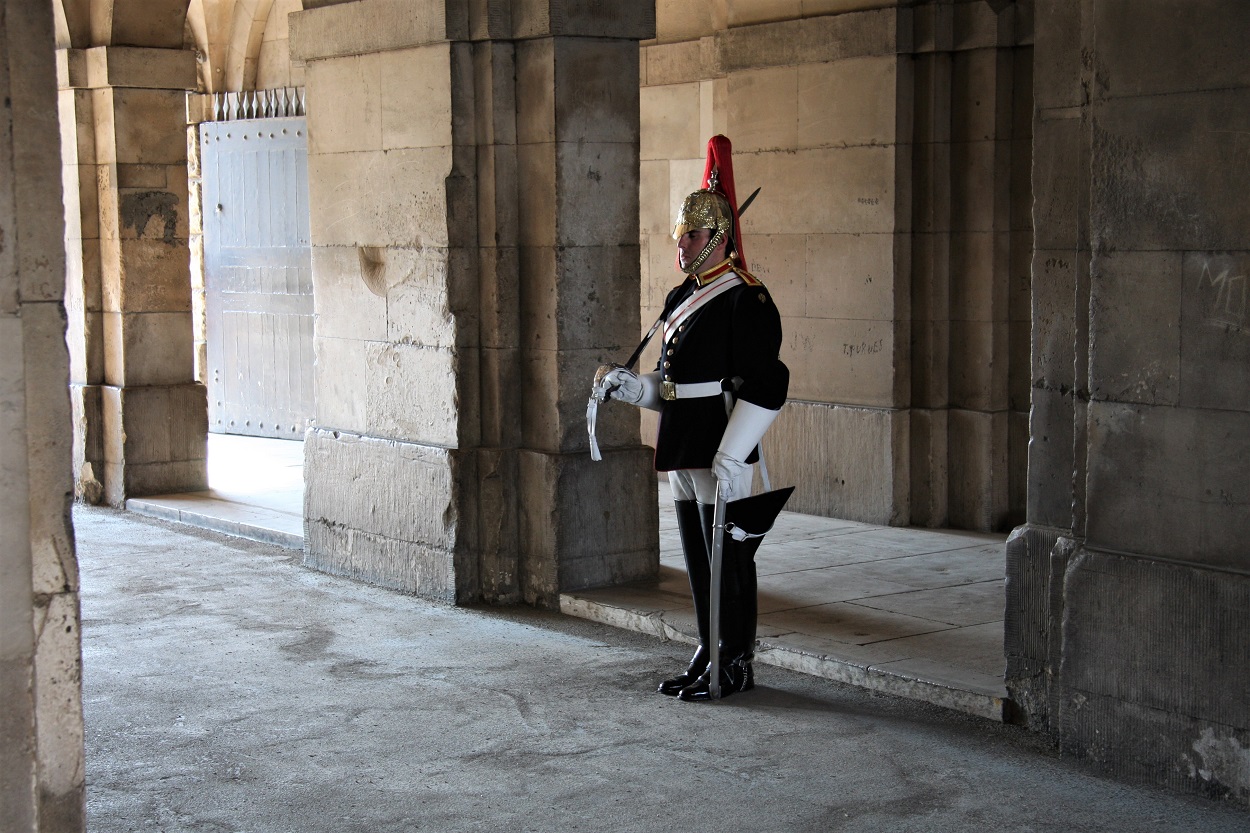
Horse Guards, design by William Kent in the Palladian style is now a Grade I listed building and has to be maintained. Although only members of the Royal Family or cavalrymen on duty are allowed to drive or ride through the archway, visitors and tourists are free to walk through from Whitehall to Horse Guards Parade and St James's Park.
Changing of the 'Long Guard'.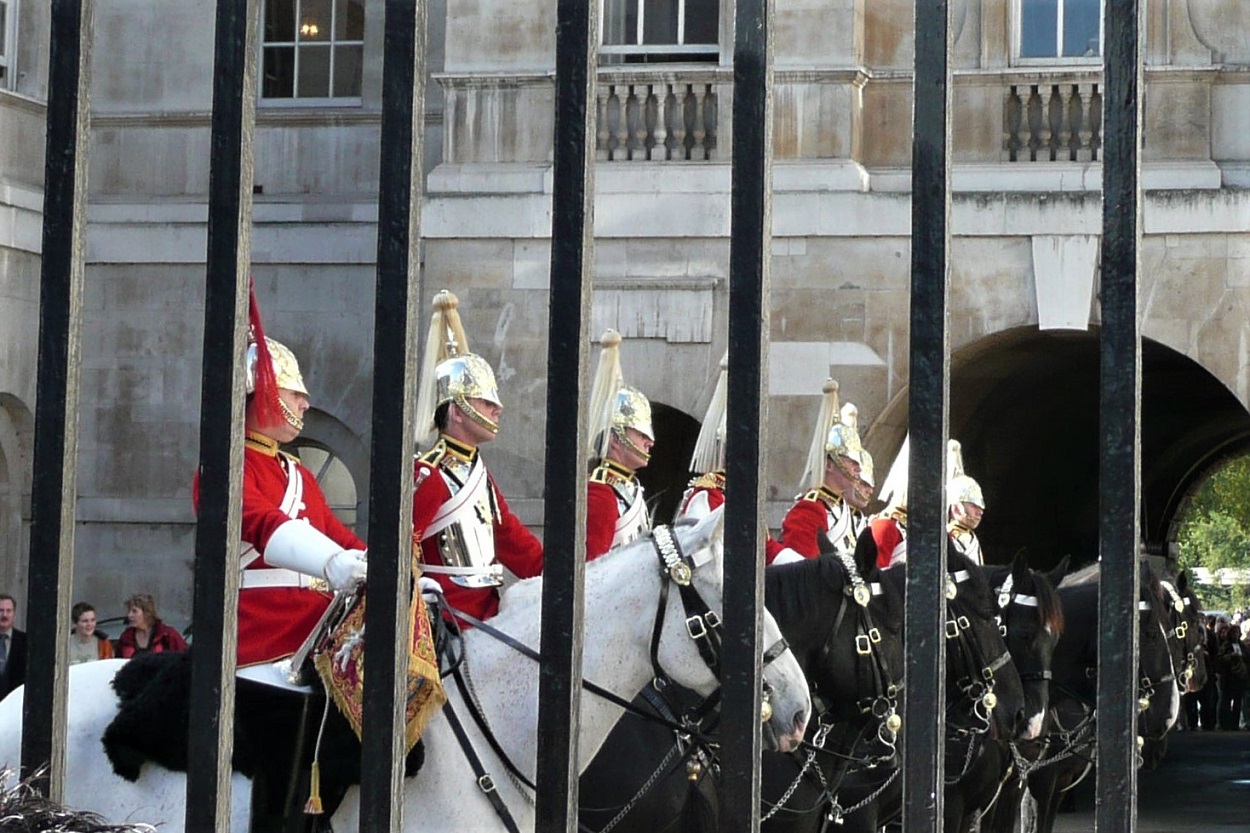
In early times the Guard included as many as 100 troops. Now it consists of only a small number of troops depending on:
When The Queen is in London;
Long Guard: 1 Officer, 1 Corporal Major (who carries the Standard), 2 Non-Commissioned Officers, 1 Trumpeter and 10 Troopers.
When The Queen is not resident in London:
Short Guard: 2 Non-Commissioned Officers and 10 Troopers.
Visitor Infomation
Whitehall is a public road and open 24 hours a day, except during national or royal ceremonies. Horse Guards Passage is open during the day and free to walk through.Further information:
Horse Guards Parade
